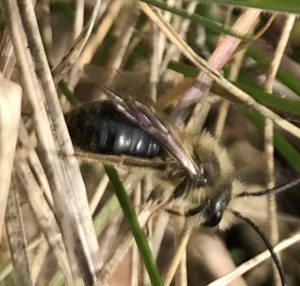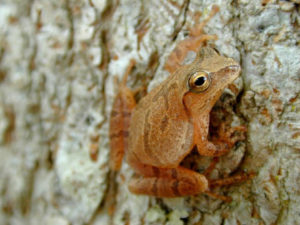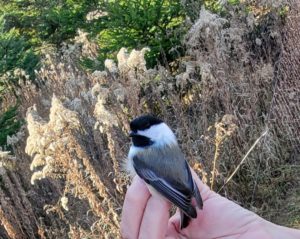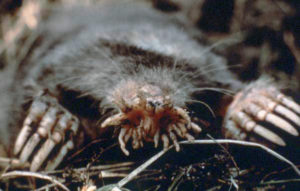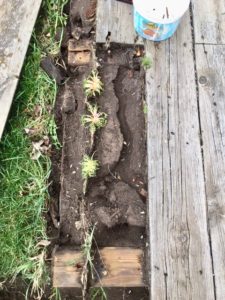What a joy to finally emerge from the cold, at least some days, and see nature’s green again. Early morning’s in May, when not too cold and a calm wind are my favorite days of the year. The haze of green new growth, reddish buds, and white flowers paint the forest canopy in gentle springtime hues, and the songs of returning birds are the perfect accompaniment.
I had such an experience on Trillium Trail at Woodland Dunes the other day. The sun shone brightly and there was no wind. Skunk cabbages were still emerging from the mucky swales below the mature catkins of the pussy willows. Speckled alders were budding out, and at least three northern waterthrushes sang from hidden perches. A red-shouldered hawk soared and screeched above the swamp, and a pine warbler sang his feeble song from the top of a white pine on a ridge. There were no 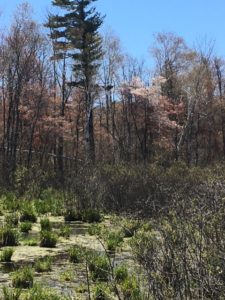 mosquitoes to be had, and a few spring peepers still called from the flooded areas.
mosquitoes to be had, and a few spring peepers still called from the flooded areas.
The morning made me think about how this wooded swamp, disregarded as wasteland by some, is filled with life, and how restorative it can be to just be in such places. Wetlands and their margins are some of the most favorable areas for wildlife, and are especially beneficial in the world of nature. They are wonderful places to observe species and their interactions, and being immersed in such a setting is beneficial to our well-being.
I could appreciate that as I walked along the trail, eventually coming to a short boardwalk over one of the larger swales in the preserve. A wood duck jumped out of the water into flight, and spiky sedges emerged in clumps from the dark water. On either side of the swale were ancient beach ridges covered with red maples, white pines, black cherries, and others. Juneberries, one of the first flowering trees to bloom, whitewashed part of the forest with their blossoms. In a while, dark blue berries will follow, but birds will consume them all before my feeble senses tell me that they are ready. That’s fine- we should be content with some things being just “for the birds”.
On the boardwalk, seated on a bench, a visitor sat quietly reading amid the peaceful surroundings. It was such a perfect setting- the last thing I wanted to do was intrude on her solitude. So I turned around and went back the way I came, still enjoying the perfect morning.
Photo- juneberries in blossom in the forest along Trillium Trail at Woodland Dunes.

